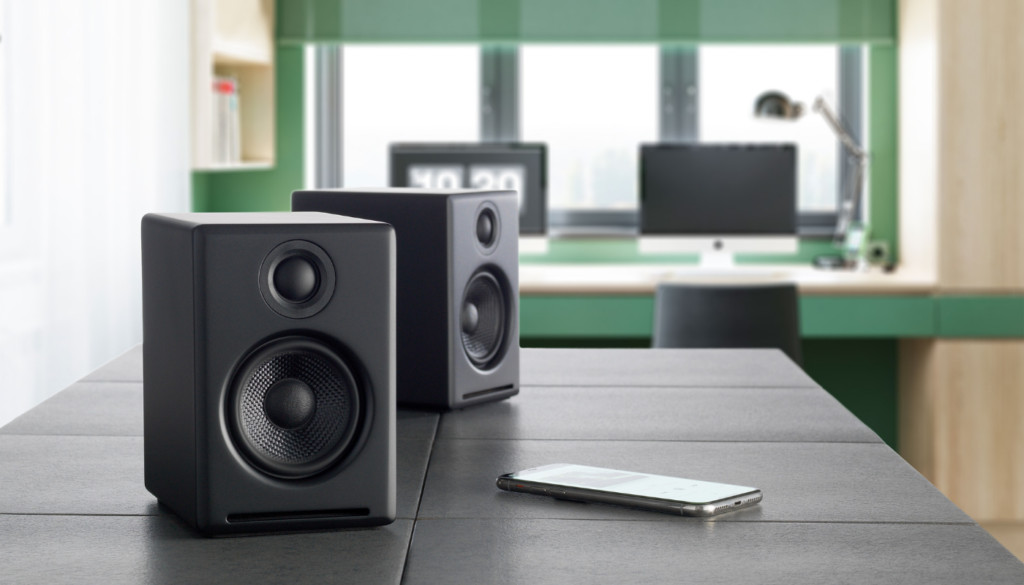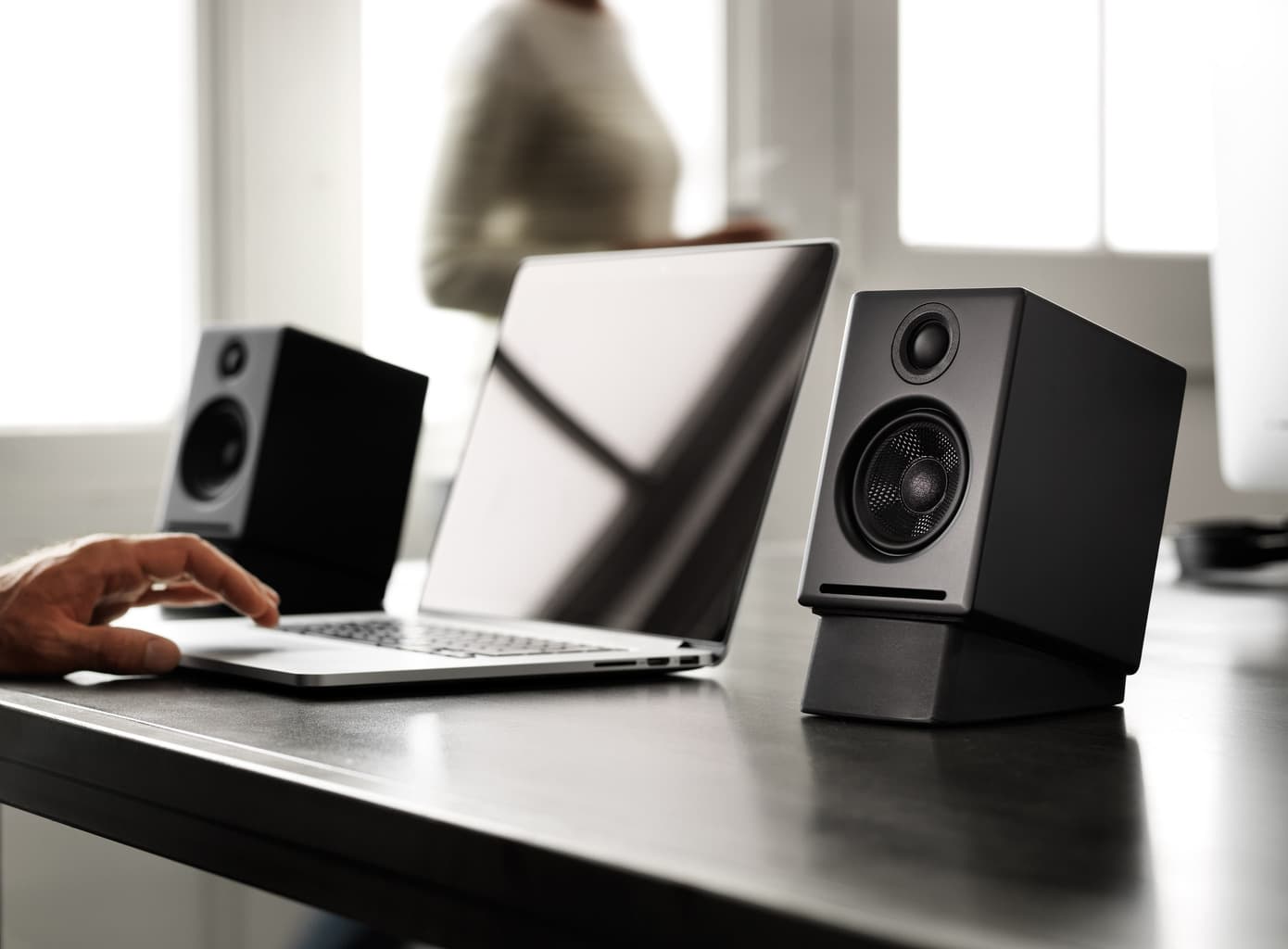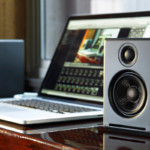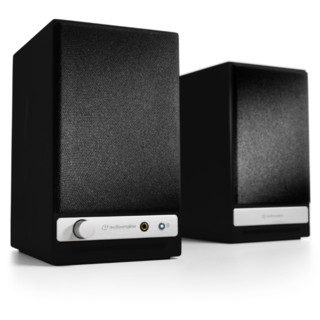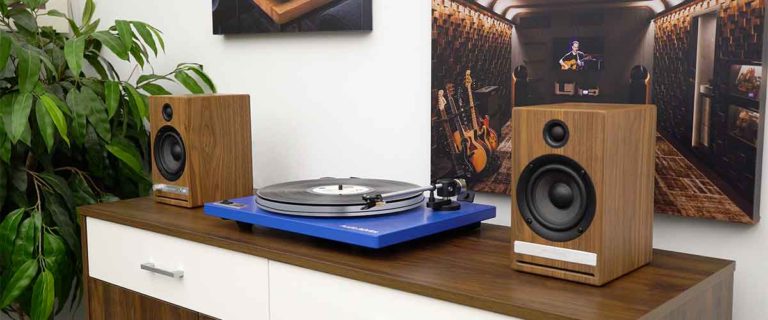I love PC gaming. Since returning to it in earnest in 2012, it’s introduced me to all kinds of technologies and companies that I’d never heard of or before but am now glad that I have. The latest example of this is Audioengine, a speaker maker based out of Austin, Texas that only came to the scene in 2005. This alone is pretty brave considering the audio game is littered with big name brands which are considered to have provenance. At a time when the audio market is getting increasingly crowded as brands like Marshall enter the personal and Bluetooth audio fray where before they were known for the famed Marshall Stack used by the likes of Hendrix, it’s a brave duo who look to make a splash from scratch in the audio game which is exactly what Brady and Dave did when they founded Audioengine and damn am I glad that they did.
Over the last few weeks, I’ve been trying out the latest speakers to come from the company, a refinement of their lauded Audioengine A2+ powered speakers which are quite clearly aimed at the desktop market given their form factor and functionality. The A2+ was by all accounts a great stab into this highly competitive marketplace but lacking a fairly critical piece in the modern era – wireless. So now the Audioengine team have brought out the A2+ Wireless speakers and can claim to be part of the modern desktop speaker debate in earnest. So let’s see whether these speakers can cut the mustard.
Audioengine A2+ Wireless – In the Box
As ridiculous as it is, I find myself grinning like an idiot when I pull open the box. Regularly reviewing kit can lead to having a bit of a “don’t care” attitude which is a shame as the excitement of opening a box of new stuff can be a great feeling. With the A2+ though I’m pretty surprised to see that small touches like cloth bags over the speakers with drawstrings make me feel like something special is enclosed within. In an age where profits above all are often the mantra, a tinge of concern crosses my mind, I hope they haven’t skimped on audio quality to keep up appearances. We’ll find out soon enough.
I’m also fairly surprised at the diminutive stature of the A2+. I hadn’t particularly bothered checking the dimensions before asking for a review sample as desktop real estate isn’t really a problem for me, particularly since I downsized the PC case from a Cosmos 2 to a mid-tower but these speakers really are quite small.
Everything is packaged nicely and securely and the parts all feel well engineered with a suitable heft to them despite their small size. Let’s take a look at the specs then.
- 60W peak power total (15W RMS / 30W peak per channel)
- 2.75” aramid fibre woofer and 3/4″ silk dome tweeter per speaker
- RCA line out
- Signal to noise ratio of >95 dB
- Total harmonic distortion of <0.05%-
- Frequency response 65Hz to 22kHz +/- 2dB
- Impedance 10 ohms
- Dimensions 6” (H), 4” (W), 5.25” (D)
- Weight Left: 1.6Kg (3.55 lbs), Right: 1.4Kg (3.15lbs)
It’s interesting to note here that where most desktop and PC oriented speakers will simply quote a frequency response range (maybe with a peak/RMS W output if you’re lucky!), Audioengine has published deeper specs, the kind of which audiophiles will be looking for to get a sense of what the speaker is capable of beyond the headline numbers which can be somewhat meaningless in isolation. A statement of intent then. This is a company which is wearing its heart on its sleeve and what we see here bodes well, particularly given the price point.
Sound and Hearing Brief Intro
A lot of audio kits will tend to focus on or around what I refer to as the “standard” 20-20 range. This is talking about the frequency response from the low end to the high with 20 Hz to 20 kHz. “High definition audio” will tend to try to extend that range somewhat, going from single digit Hz up to 40 kHz or even more (100 kHz for the ridiculously expensive Sennheiser Orpheus which will set you back over $50k).
Realistically, as people age, their ability to genuinely hear the more extreme ranges disappears, low ends probably start at about 50 – 60 Hz for most people and will top out somewhere approaching 20 kHz. Below this it is more about “feeling” rather than hearing the bass and above the top end you may get a bit more range in ideal conditions with no other background noise etc but this, coupled with the fact that many people will be listening to lossy audio formats on a range of variable quality phones, sound cards, speakers etc mean that if you want a serious high definition audio experience, you’re unlikely to just look at buying a set of speakers for a PC, it’ll also cost you a lot more.
Audioengine A2+ Wireless for Music
I’m pleased to note that the speakers don’t come with a reviewers guide and assume the competence of the reviewer (who they do vet beforehand!) as well as demonstrating confidence in their product as they’re not trying to guide the reviewer into listening to things which their audio setup favours. Let’s make things tricky to start with as I usually do then, with Tchaikovsky’s Symphony #6 Allegro Molto Vivace. For those that aren’t familiar with it, this particular piece is something that gamer-centric audio usually struggles with. It’s a non-bass heavy and very precise/delicate piece of music which demands good range control and usually gets destroyed by anything with a subwoofer tuned for pumping out explosions and gunfire like many PC audio solutions.
It’s probably slightly unfair on a lot of the other stuff I review to use this piece but I’m expecting good things from the A2’s here and indeed they don’t disappoint. Precision is plentiful but the speakers have a warmth that stops the sound coming across as overly clinical. Mids and highs are well separated and the piece comes together in a way that is quite startling for a pair of $269 speakers. There’s no subwoofer to overpower the track and I wonder if that may be where the Audioengine suffer a bit. Time to try something different…
The family is told to leave me alone in the study for a while as it’s time for an old favourite. Pink Floyd’s Echoes is 23 and a half minutes of audio ecstasy (my kids disagree with me for some reason!) The song (if it can really be called a song, it’s more an experiment in sound) has a large variety of elements to it, including significantly more bass than the Tchaikovsky piece. The range on the Audioengine speakers doesn’t go as low as my regular desktop speakers (I’m still using Razer’s excellent Nommo Pro’s which have a dedicated subwoofer and a range that goes down to 35 Hz), but at less than half the price, that’s to be expected. Even so, I’m surprised at the amount of low end that the A2+ puts out. It’s obviously not room-thumping bass but it’s plentiful and gives great character to the song.
I know a lot of gamer audio is about making the room and listener vibrate as much as is physically possible with a subwoofer but that’s really not what audiophile equipment is aimed at. The purity of setups like this is that the 2 channel audio reproduction should be as pure and clean and as close to master as possible. I’ve both owned and auditioned some ridiculously high-end audio equipment in the past and while, sure, you can shove a big bloody subwoofer on pretty much any setup (in fact you can connect a sub to the A2+ from your subs line level output), it’s kind of missing the point when it comes to audio reproduction.
Final song test then and it’s time for Eddie Van Halen’s Eruption. The screaming wail of Eddie’s guitar comes bursting through Audioengine’s little speakers that could and I’m again genuinely impressed. These speakers, for all their cutesy size and reasonable price, are well ahead of other comparably priced desktop speakers and even able to keep up with stuff above their price bracket.
Let’s get to some games.
The A2+ Wireless for Gaming
Ok, so we’ve established that they’re good for music, but let’s face it, on this site, they need to handle gaming well too. I’m slightly surprised at how well the A2+ is performing so decide to throw something at it that should show up the weak points first. Let’s dive straight into some Doom! Although I’m not a massive FPS fan, I played the original when it released in 1993 A LOT and the 2016 reboot was a pre-order for me, that’s how excited I was about it. Doom, however, is your typical BIG AUDIO, BIG ASPLOSIONS BE HERE type of game and this is where I think the Audioengine offering may suffer a bit. I’ve got to say though that as I make my way through swathes of the damned, the game is sounding pretty bloody good actually. Certainly, when I get to some of the meatier weapons there is a noticeable lack of low-end thump but overall the speakers give a very good accounting of themselves.
Next up is Alien: Isolation. This is also a game of great audio but it’s about the atmosphere here and less about bombastic explosions. Precision audio is needed and the Audioengine A2+ delivers it exactly as I’d expect it to do.
Star Citizen isn’t really a game that I’m planning to use speakers for due to its MMO nature which obviously lends itself to headsets and voice comms with friends and squadmates, but it does have a wide variety of soundscapes with everything from fairly precision FPS gunfire to spaceflight and large energy weapons replete with a wide soundstage that befits the universe the game is building.
I dive into a game without anyone else since I’m just looking to consume the sound rather than chat with anyone too and the game soundtrack doesn’t disappoint, coming in strong with location precision, great quantum travel audio effects and excellent assault rifle staccato.
All in all, the speakers are coming across well for gaming. Not as strongly as they do for general music listening but that’s very much going to be due to the lack of a subwoofer and the fact that most games are less about music reproduction and more about slamming tunes and guns/explosions. It’s pretty fair to say that many games treat audio the same way that Michal Bay does, namely that if you can’t feel your body shake, you’re doing it wrong.
Wrapping Up
Back when I was a kid living in Hong Kong in the late ’80s, I remember my dad getting a Sony Discman. This was an amazing thing I recall thinking at the time. We’d had CDs by then of course but when I went to school I was still tethered to an analogue, magnetic tape-based portable audio experience in the shape of a Sony Walkman (with mandatory Mega Bass of course!) By then, portable tape player quality had come a long way from the first Walkman I’d had in the early ’80s (this time while living in Boston, MA), but I still remember being completely dazzled by my dad’s first Discman. It was expensive, metallic, oozed quality and when I put the earbuds in to listen to it for the first time I think I shuddered as I’d never had such crystalline sharp audio pumped directly into my ears. That’s probably the moment I’d point to in my life where I started my (very expensive but very fun!) journey down the path of an audiophile.
Decades later, as a jaded 40-something who has spent far too much money on audio gear over the years, it’s pretty rare that I come across a product that I think just hits all the right notes including value. It’s pretty easy (ok, not really but kind of) to get amazing audio these days. You spend a lot of money and generally, you can get a really good audio experience. That’s not always the case of course as many people will quickly point to brands like (no highs, no lows, must be) Bose, Beats and others which are pricey but generally unimpressive considering the cost, but companies like Denon, KEF, Harman Kardon, Pioneer, B&W, Arcam, Sony, Marantz and into the realms of ridiculousness like Meridian all offer varying degrees of high performing audio at relative price points.
The tricky thing is getting really good VALUE and that’s a lot harder to come by. Throwing money at the problem is an age-old way to getting good stuff but there’s very little value to be found in this approach. Turning on the first piece of music on Audioengine’s A2+ Wireless brought me a shudder as it’s been a while since I’ve had some real audiophile kit in my hands and the experience jarred me, not quite to the extent that trying my dad’s Discman back in the day did but certainly the experience was similar.
Overall, these are great speakers then. There are certainly better desktop sound based solutions out there but certainly not at anywhere near this price point and in that sense, Audioengine’s entry-level PC speaker has hit the value for money scale in its favour in a big way.
If you’re looking for a genuine entry into the world of audiophile grade kit, this is an extremely good choice of speaker. For those looking for bombastic, Michael Bay-esque gaming explosions, you should probably look elsewhere, or at least consider adding a subwoofer to the A2+ but for everyone else? Get a pair, you won’t be disappointed. I’m sure some of the offerings higher up the Audioengine range may offer a more complete experience but the A2+ Wireless Speakers earn themselves a Recommended award.
Read the full review here.
